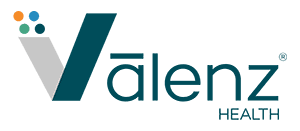OIG Compliance Program Guidance
Last month, the Office of the Inspector General (OIG) published its General Compliance Program Guidance (GCPG). The General Compliance Program Guidance (GCPG) is a comprehensive resource guide aimed at consolidating and streamlining current OIG compliance requirements, tips, and guidance into a single location.
The GCPG offers compliance program guidance for providers: The federal laws that make compliance programs necessary (Anti-Kickback Statute, Physician Self-Referral Law, etc.), a comprehensive guide on compliance program infrastructure, ways to tailor the guidance offered for both large and small entities, and other compliance considerations to consider for your program. The General Compliance Program Guidance (GCPC) in its entirety can be accessed here.
This article focuses on important information about GCPG exclusion monitoring. Within the GCPG, the Office of the Inspector General (OIG) specifically points out its legal authority to exclude individuals and entities from participation in all Federal healthcare programs, which is likely something anyone working in compliance already knows. However, the GCPG also illustrates that the OIG handles both mandatory and permissive exclusions, and while both kinds of exclusions mean the same thing, they are handed out for different reasons.
Mandatory Exclusions
For Mandatory Exclusions: The Office of the Inspector General (OIG) is required by law to manually exclude individuals and entities convicted of certain types of criminal offenses:
- Offenses related to the delivery of an item or service under Medicare or a State healthcare program
- Patient abuse or neglect
- Felony convictions for other health care-related fraud, theft, embezzlement, breach of fiduciary responsibility, or other financial misconduct
- Felony convictions relating to the unlawful manufacture, distribution, prescription, or dispensing of a controlled substance
Permissive Exclusions
For Permissive Exclusions: The Office of the Inspector General (OIG) has the discretion to exclude individuals and entities on a number of grounds, including (but not limited to):
- Misdemeanor convictions related to healthcare fraud not involving Medicare or a State health program
- Fraud in a program (other than a healthcare program) funded by any Federal, State, or local government agency
- Misdemeanor convictions relating to the unlawful manufacture, distribution, prescription, or dispensing of controlled substances
- Suspension, revocation, or surrender of a license to provide healthcare for reasons bearing on professional competence, professional performance, or financial integrity
- Provision of unnecessary or substandard services
- Submission of false or fraudulent claims to a Federal healthcare program
- Engaging in arrangements that violate the Federal anti-kickback statute
- Defaulting on health education loan or scholarship obligations
- Controlling a sanctioned entity as an owner, officer, or managing employee
Why is the distinction between Mandatory and Permissive exclusions important if they both ultimately mean the same thing? Just because an individual or an entity has not been part of anything that would require the OIG to hand out a mandatory exclusion does not mean that they haven’t been given a permissive exclusion for something else entirely. The importance lies in the need to regularly monitor the OIG Exclusions List to ensure that the individuals and entities your organization employs and interacts with are not going to bring a Civil Monetary Penalty from the OIG to your doorstep, which is something we discussed in a previous blog post on OIG compliance monitoring.
More Information on OIG Compliance
During the OIG compliance monitoring process, if you do discover that your organization has employed an individual or has contracted with an entity on the OIG Exclusions list, it is best to speak to your legal counsel and explore the OIG’s self-disclosure process. More information on the OIG’s self-disclosure process can be found at Self Disclosure Protocol 2021 (hhs.gov).



